Abstract
Background
Temporary interruption of cerebral blood flow during carotid endarterectomy can be avoided by using a shunt across the clamped section of the carotid artery. The shunt may improve the outcome. This is an update of a Cochrane review originally published in 1996 and previously updated in 2002, 2009, and 2014.
Objectives
To assess the effect of routine versus selective or no shunting, and to assess the best method for selective shunting on death, stroke, and other complications in people undergoing carotid endarterectomy under general anaesthesia.
Search methods
We searched the Cochrane Stroke Group Trials Register (last searched April 2021), the Cochrane Central Register of Controlled Trials (CENTRAL) (The Cochrane Library 2021, Issue 4), MEDLINE (1966 to April 2021), Embase (1980 to April 2021), and the Science Citation Index Expanded (SCI‐EXPANDED) (1980 to April 2021). We also searched ClinicalTrials.gov and the World Health Organization International Clinical Trials Registry Platform, and handsearched relevant journals, conference proceedings, and reference lists.
Selection criteria
Randomised and quasi‐randomised trials of routine shunting compared with no shunting or selective shunting, and trials that compared different shunting policies in people undergoing carotid endarterectomy.
Data collection and analysis
Three independent review authors performed data extraction, selection, and analysis. A pooled Peto odds ratio (OR) and 95% confidence interval (CI) were computed for all outcomes of interest. Best and worse case scenarios were also calculated in case of unavailable data. Two authors independently assessed risk of bias, and quality of evidence using GRADE.
Main results
No new trials were found for this updated review. Thus, six trials involving 1270 participants are included in this latest review: three trials involving 686 participants compared routine shunting with no shunting, one trial involving 200 participants compared routine shunting with selective shunting, one trial involving 253 participants compared selective shunting with and without near‐infrared refractory spectroscopy monitoring, and the other trial involving 131 participants compared shunting with a combination of electroencephalographic and carotid pressure measurement with shunting by carotid pressure measurement alone. Only three trials comparing routine shunting and no shunting were eligible for meta‐analysis. Major findings of this comparison found that the routine shunting had less risk of stroke‐related death within 30 days of surgery (best case) than no shunting (Peto odds ratio (OR) 0.13, 95% confidence interval (CI) 0.02 to 0.96, I2 not applicable, P = 0.05, low‐quality evidence), the routine shunting group had a lower stroke rate within 24 hours of surgery (Peto odds ratio (OR) 0.15, 95% CI 0.03 to 0.78, I2 = not applicable, P = 0.02, low‐quality evidence), and ipsilateral stroke within 30 days of surgery (best case) (Peto OR 0.41, 95% CI 0.18 to 0.97, I2 = 52%, P = 0.04, low‐quality evidence) than the no shunting group. No difference was found between the groups in terms of postoperative neurological deficit between selective shunting with and without near‐infrared refractory spectroscopy monitoring. However, this analysis was inadequately powered to reliably detect the effect. There was no difference between the risk of ipsilateral stroke in participants selected for shunting with the combination of electroencephalographic and carotid pressure assessment compared with pressure assessment alone, although again the data were limited.
Authors' conclusions
This review concluded that the data available were too limited to either support or refute the use of routine or selective shunting in carotid endarterectomy when performed under general anaesthesia. Large‐scale randomised trials of routine shunting versus selective shunting are required. No method of monitoring in selective shunting has been shown to produce better outcomes.
Plain language summary
Routine or selective carotid artery shunting for carotid endarterectomy (and different methods of monitoring in selective shunting)
Question
We investigated how shunting would affect stroke, death, and other complications, and how the different monitoring methods for selective shunting would impact on these outcomes in people undergoing carotid endarterectomy under general anaesthesia.
Background
About 20% of strokes result from narrowing of the carotid artery (the main artery supplying blood to the brain). Carotid endarterectomy is an operation to remove this narrowing and therefore reduce the stroke risk. However, there is a 2% to 3% operative risk of causing a stroke. The use of a silicon tube, or shunt, as a temporary bypass can reduce the length of time that blood flow to the brain is interrupted during the operation. This may reduce the perioperative stroke risk but could also result in arterial wall damage and therefore increase the stroke risk. Shunt surgery falls into three categories. First, in routine shunting, the surgeon inserts a shunt in every patient. Second, in selective shunting, the surgeon only uses a shunt in patients with an inadequate blood supply to the brain following clamping; various cerebral monitoring techniques, such as ultrasound for predicting who needs a shunt, have been used in this policy. Third, in no shunting, surgeons do not employ shunts at all.
Study characteristics
Six trials were analysed in this updated review, involving a total of 1270 participants. Three trials compared routine shunting with no shunting, one trial compared routine shunting versus selective shunting, and another two trials compared different methods of monitoring in selective shunting. We have not yet identified any trials that compared selective shunting with no shunting. All the included trials assessed shunting used in people undergoing endarterectomy under general anaesthetic. Overall, the participant ages ranged from 40 to 89 years and there were more male than female participants. Where reported, participants were followed up for no longer than 30 days.
Key results
A very limited number of trials suggested that routine shunting compared to no shunting in patients undergoing carotid endarterectomy under general anaesthesia resulted in a lower stroke‐related death within 30 days of surgery, less stroke rate within 24 hours of surgery and ipsilateral rate reduction within 30 days of surgery. More trials are needed.
Quality of the evidence
Low quality of the evidence for all outcomes reduced the reliability of the results. There were significant problems contributing to the low quality, especially in the research methodology.
Summary of findings
Summary of findings 1. Shunting compared with no shunting for carotid endarterectomy.
| Shunting compared with no shunting for carotid endarterectomy | |||||
|
Patient or population: patients with symptomatic or asymptomatic carotid disease Settings: hospital Intervention: shunting Comparison: no shunting | |||||
| Outcomes | Illustrative comparative risks* (95% CI) | Relative effect (95% CI) | No of participants (studies) | Quality of the evidence (GRADE) | |
| Assumed risk (no shunting) | Corresponding risk (shunting) | ||||
| Death from all causes within 30 days of surgery | 21 per 1000 | 4 per 1000 (1 to 14) | OR 0.45 (0.13 to 1.59) | 655 participants (3 studies) | ⊕⊕⊝⊝ lowa,b |
| Stroke‐related death within 30 days of surgery (best‐case) | 12 per 1000 | 0 per 1000 (0 to 0) | OR 0.13 (0.02 to 0.96) | 655 participants (3 studies) | ⊕⊕⊝⊝ lowa,b |
| Stroke‐related death within 30 days of surgery (worst‐case) | 9 per 1000 | 1 per 1000 (0 to 8) | OR 0.37 (0.05 to 2.62) | 655 participants (3 studies) | ⊕⊕⊝⊝ lowa,b |
| Any stroke during surgery (best‐case) | 39 per 1000 | 7 per 1000 (3 to 17) | OR 0.42 (0.16 to 1.07) | 655 participants (3 studies) | ⊕⊕⊝⊝ lowa,b |
| Any stroke during surgery (worst‐case) | 24 per 1000 | 41 per 1000 (16 to 105) | OR 1.32 (0.52 to 3.38) | 655 participants (3 studies) | ⊕⊕⊝⊝ lowa,b |
| Any stroke within 24 hours of surgery | 53 per 1000 | 0 per 1000 (0 to 0) | OR 0.15 (0.03 to 0.78) | 214 participants (2 studies) | ⊕⊕⊝⊝ lowa,b |
| Any stroke within 30 days of surgery | 45 per 1000 | 26 per 1000 (12 to 57) | OR 0.77 (0.35 to 1.69) | 655 participants (3 studies) | ⊕⊕⊝⊝ lowa,b |
|
*The basis for the assumed risk is provided in footnotes. The corresponding risk (and its 95% confidence interval) is based on the assumed risk and the relative effect of the intervention group (and its 95% CI). CI: confidence interval; GRADE: Grades of Recommendation, Assessment, Development and Evaluation; OR: odds ratio | |||||
| GRADE Working Group grades of evidence High quality: Further research is very unlikely to change our confidence in the estimate of effect. Moderate quality: Further research is likely to have an important impact on our confidence in the estimate of effect and may change the estimate. Low quality: Further research is very likely to have an important impact on our confidence in the estimate of effect and is likely to change the estimate. Very low quality: We are very uncertain about the estimate. | |||||
a Downgraded by one level due to serious risk of bias as evidence used an inappropriate random sequence generation, had imbalanced surgeon assignment between groups, and had imbalance in the baseline characteristics between groups
b Downgraded by one level due to imprecision as the evidence had a wide CI
Background
Description of the condition
Around 20% of people presenting with a transient ischaemic attack (TIA) or non‐disabling stroke have significant stenosis with unstable atheromatous plaque at or around the bifurcation of the ipsilateral carotid artery. This plaque can lead to the formation of emboli, which may cause a stroke. Carotid endarterectomy is an operation to remove this stenosis together with unstable plaque and, therefore, decrease the risk of stroke.
Description of the intervention
Carotid endarterectomy has been shown in large, well‐conducted randomised controlled trials (RCTs) to substantially reduce the relative risk of stroke in people with recent TIAs or minor strokes related to severe symptomatic carotid artery stenosis (ECST 1998; NASCET 1991; Rerkasem 2020). To a lesser extent, benefit has also been shown for moderate symptomatic carotid artery stenosis (Rerkasem 2020). In these trials, the benefits were seen despite a stroke and death rate, within 30 days of the operation, of between 2% to 3%. Most of these strokes occurred during, or within, a few days of surgery, and were presumably related to surgery. More recently, it has been shown that people with asymptomatic carotid artery stenosis of greater than 60% may also benefit from carotid endarterectomy, but this relies on an average 30‐day stroke and death rate of 3% or less (ACAS 1995; ACST 2004). Reducing the risk of perioperative stroke and death should therefore increase the number of people who can benefit from carotid endarterectomy. Most of the perioperative strokes are ischaemic and some (especially those that occur during the operation) may be caused by the temporary interruption of blood flow during the procedure whilst the carotid artery is clamped. This reduction in blood flow should be avoided if an intraluminal shunt is placed across the clamped section of the artery and this may reduce the perioperative stroke rate. When carotid endarterectomy is performed under local anaesthetic, about 10% to 20% of people develop a transient neurological deficit after the artery is clamped, in which case the vast majority of surgeons would regard a shunt as mandatory. However, the routine or selective use of intraluminal shunting in carotid endarterectomy under general anaesthetic is more controversial. The publication of the results of the GALA trial has shown that the operative risk of stroke and death due to endarterectomy under local anaesthetic versus general anaesthetic is similar and so many operations will continue to be done under general anaesthetic (Lewis 2008).
How the intervention might work
Some advocate that routine shunting for all operations be done under general anaesthetic on the assumption that it reduces the risk of perioperative ischaemic strokes; it may also reduce the risk of minor cerebral ischaemic damage, and it also allows the surgeon time to perform an unhurried carotid endarterectomy or to teach a trainee carefully and in an unhurried manner (Javid 1979; Thompson 1979). Others advocate the selective use of shunting only in people who are at high risk of developing cerebral ischaemia during carotid clamping, but there is no consensus on how to identify which people need a shunt. Methods used to select which people to shunt include: using preoperative features such as a previous ipsilateral stroke or a contralateral carotid occlusion (Buche 1988); using indirect assessments of cerebral blood flow during the operation by monitoring electroencephalographic (EEG) activity (Whittemore 1983), somatosensory evoked potentials (SEP) (Schweiger 1988), carotid stump back pressure (Ricotta 1983), or combinations of these; using direct assessments of cerebral blood flow during the operation using intra‐arterial radio‐labelled xenon (Sundt 1986), or transcranial Doppler (Steiger 1989); and assessing the development of new neurological signs in awake patients who have their endarterectomy performed under local anaesthetic (Benjamin 1993; Connolly 1977; Evans 1985).
None of these monitoring techniques are perfect. Studies in people having endarterectomies performed under local anaesthetic have shown that both EEG monitoring and carotid stump pressure assessment may be normal in 6% to 30% of those who develop neurological signs and that they may be abnormal in 3% to 11% of those who do not develop signs of ischaemia (Benjamin 1993; Connolly 1977; Evans 1985). Many of these techniques also require additional technology and expert interpretation and so may not be practical in many situations. In addition, shunting may be associated with complications such as air embolism, plaque embolism, dissection of the carotid artery, acute occlusion of the carotid artery, and it also lengthens the time of the procedure and may make it technically more difficult (Green 1985; Ott 1980). All of these factors may be associated, paradoxically, with an increased risk of perioperative stroke (Salvian 1997). Several authors have, therefore, argued that shunting should be avoided (Ott 1980; Prioleau 1977; Reddy 1987). Shunting could also be associated with other complications due to increased manipulation of the artery such as an increased risk of cranial nerve palsy (Forssell 1995), arterial haemorrhage or infection, or long‐term restenosis, perhaps because of intimal damage leading to intimal hyperplasia (Ouriel 1987), but accurate data on these risks are limited at present.
Why it is important to do this review
The lack of good evidence to support the use of shunts is reflected by a considerable variation in surgical practice. For UK surgeons (N = 76) performing carotid endarterectomy under general anaesthesia, a shunt was always, never, or selectively used by 73.6%, 4.2% and 22.2% respectively (Girn 2008). An earlier survey from North America showed that about one‐third of carotid endarterectomies were performed with routine shunting, one‐third with selective shunting and one‐third without shunting (Fode 1986). Data from the European Carotid Surgery Trialists (ECST) showed highly significant variation in shunting practices for endarterectomy done under general anaesthetic both between individual surgeons and between countries (both P < 0.001) (Bond 2002). For example, shunts were used in 89% of operations performed in Germany versus 41% performed in Finland and 1% of those performed in France.
The best way to determine the perioperative (and long‐term) risks and benefits of shunting during carotid endarterectomy is to compare shunting with no shunting in RCTs. We, therefore, reviewed all such trials, and the trials comparing different methods of selecting which people under general anaesthetic require selective shunting. A comparison of local versus general anaesthetic is dealt with in a separate review (Vaniyapong 2013).
This is an update of a Cochrane Review originally published in 1996 (Counsell 1996), and previously updated in 2002 (Bond 2002a), 2009 (Rerkasem 2009a), and 2014 (Chongruksut 2014).
Objectives
To assess the effect of routine versus selective or no shunting, and to assess the best method for selective shunting on death, stroke, and other complications in people undergoing carotid endarterectomy under general anaesthesia.
Methods
Criteria for considering studies for this review
Types of studies
We included all unconfounded RCTs and quasi‐RCTs that compared shunting with no shunting, or one method of monitoring with another in selective shunting. Since foreknowledge of treatment allocation can bias the results of randomised trials (Schulz 1995), where there were sufficient data, we planned to perform sensitivity analyses including only trials where treatment allocation was securely concealed.
Types of participants
Trials that included any person undergoing unilateral or bilateral carotid endarterectomy (whether it was for symptomatic or asymptomatic carotid disease) were eligible.
Types of interventions
The following types of trials were eligible.
Trials comparing a policy of routine shunting in all participants using any type of carotid shunt with a policy of avoiding a shunt (never shunting).
Trials comparing a policy of selective shunting in only those participants identified as being at risk of cerebral ischaemia with a policy of avoiding a shunt. People could be identified as being at risk of ischaemia either on the basis of preoperative assessment (e.g. recent stroke), or assessment during the operation (e.g. assessment of stump pressure or EEG monitoring or near‐infrared spectroscopy (NIRS) during a period of arterial occlusion).
Trials comparing a policy of selective shunting with routine shunting.
Trials in which participants were shunted selectively under general anaesthetic and which compared one method of assessment versus another to identify which people required a shunt.
Types of outcome measures
Primary outcomes
Death from any cause within 30 days of surgery
All strokes (ischaemic and haemorrhagic) that occurred within 30 days of surgery. We did not include TIAs because these are less important to patients since they do not result in chronically impaired function. They are also more difficult to diagnose reliably, and so there is more potential for bias in their assessment (particularly if this is unblinded).
Secondary outcomes
Death from any case during long‐term follow‐up
All strokes (ischaemic and haemorrhagic) that occurred during the operation (i.e. stroke apparent on recovery from anaesthetic), within 24 hours of surgery, and during long‐term follow up
All ipsilateral strokes (ischaemic and haemorrhagic) that occurred within 24 hours and 30 days of surgery and during the long‐term follow‐up
Other complications within 30 days of surgery, such as rupture or haemorrhage from the endarterectomy site, infection of the wound or artery, occlusion of the artery operated on, or ipsilateral nerve palsies
Long‐term arterial complications, such as restenosis of the operated artery
Cognitive function at the end of follow‐up
Search methods for identification of studies
We searched for studies published in all languages and arranged for the translation of trials, where necessary.
Electronic searches
We searched the Cochrane Stroke Group Trials Register (last searched in April 2021), the Cochrane Central Register of Controlled Trials (CENTRAL) (The Cochrane Library 2021, Issue 4) (Appendix 1), MEDLINE (Ovid) (1966 to 27 April 2021) (Appendix 1) and Embase (Ovid) (1980 to 27 April 2021) (Appendix 2). We developed the search strategies with the help of the Cochrane Information Specialist. These have been linked to adaptations of the Cochrane Highly Sensitive Search Strategy for identifying randomised trials in the Technical Supplement to Chapter 4: Searching for and selecting studies in the Cochrane Handbook for Systematic Reviews of Interventions Version 6.2.0 (updated February 2021) (Lefebvre 2021).
We also systematically searched the Science Citation Index Expanded (SCI‐EXPANDED) (1980 to April 2021) using the terms 'carotid' and 'trial or random*'.
Searching other resources
We searched ClinicalTrials.gov and the World Health Organization International Clinical Trials Registry Platform (WHO ICTRP) (Appendix 3).
-
We handsearched the following journals:
Annals of Surgery (1981 to 27 April 2021);
Annals of Vascular Surgery (1994 to 27 April 2021);
Vascular (previously Cardiovascular Surgery) (1994 to 27 April 2021);
European Journal of Vascular and Endovascular Surgery (previously European Journal of Vascular Surgery) (1987 to 27 April 2021);
Journal of Vascular Surgery (1994 to 27 April 2021);
Stroke (1994 to 27 April 2021).
We reviewed the reference lists of all relevant studies.
We contacted experts in the field to identify further published and unpublished studies.
Data collection and analysis
Three review authors (BC, SN, KR) independently collected data. We collected the details of methods, participants, setting, context, interventions, outcomes, results, publications, and investigators. Odds ratios (OR) and 95% confidence intervals (CI) were used to calculate the effect estimate of each outcome. Best‐ and worst‐case scenarios for some outcomes were calculated when the number of events in each group was not available. The best‐case scenario refers to good outcomes in all missing intervention group participants, together with poor outcomes in all missing control group participants. The worst‐case refers to the opposite of the best‐case scenario, i.e. bad outcomes in all missing intervention group participants, together with good outcomes in all missing control group participants. If there were no outcome data in the groups regarding an outcome, we would discuss this issue in the discussion section. Based on an analysed process, studies containing no events in both arms would be excluded from the meta‐analysis (Deeks 2022). We performed meta‐analysis using RevMan 5.4.1 (RevMan 2020).
Selection of studies
Three review authors (BC, SN, KR) independently read the titles and abstracts of the records obtained from the electronic searches and excluded obviously irrelevant studies. We obtained the full texts of the remaining papers and the same authors independently selected studies for inclusion based on the predefined criteria. We resolved any disagreements through discussion.
Data extraction and management
We extracted details of the method of randomisation, the blinding of outcome assessments, losses to follow‐up, cross‐overs, and exclusions after randomisation from the publications. We also compared participant characteristics (age, gender, vascular risk factors, indication for surgery) and details of the operation (type of cerebral monitoring, use of carotid patching, anaesthetic technique, use of perioperative antiplatelet therapy) between the treatment groups in each trial. Also, although people who were asymptomatic were included in some studies, the data were not available in sufficient detail to allow separate analysis of the outcomes of carotid endarterectomy in people with symptoms and those without symptoms. However, it is unlikely that the relative effect of shunting versus no shunting varied qualitatively with symptom status.
Assessment of risk of bias in included studies
Two review authors (BC, AR) independently assessed risk of bias into three categories: low risk, high risk, and unclear risk in the Risk of bias tables, as described in the Cochrane Handbook for Systematic Reviews of Interventions (Higgins 2011). These risks of bias included random sequence generation (selection bias), allocation concealment (selection bias), blinding (performance bias and detection bias), blinding of participants and personnel (performance bias), blinding outcome assessment (detection bias), and incomplete outcome data (attrition bias). Disagreement between the two authors was resolved by discussion.
Measures of treatment effect
We measured the treatment effects in the following outcomes: death (within 30 days of surgery and long‐term follow‐up), all strokes (during operation, within 24 hours of surgery, within 30 days of surgery, and during long‐term follow‐up), all ipsilateral strokes (within 24 hours of surgery, within 30 days of surgery, and during long‐term follow‐up), other complications such as haemorrhage and arterial infection (within 30 days of surgery), long‐term arterial complications such as restenosis of the operated artery, and cognitive function (end of follow‐up). The treatment effects of all outcomes were calculated as ORs with 95% CIs.
Unit of analysis issues
We extracted details of all outcome events. Some studies, including participants who had bilateral operations, only reported the number of participants, not the number of arteries, in each group. Since bilateral carotid endarterectomy was unusual, we used the number of participants as the number of operations in such studies.
Dealing with missing data
When data were missing, we contacted the corresponding author or co‐author through the address given in the publication. If this information was not available, we searched for the study group via the Internet and contacted it for the missing data.
Assessment of heterogeneity
We assessed heterogeneity between study results using the I2 statistic (Deeks 2022). We examined the percentage of total variations across the studies due to heterogeneity rather than to chance. Values of I2 over 75% indicated a high level of heterogeneity.
Assessment of reporting biases
We planned to use funnel plots to evaluate reporting biases among the included studies if there were 10 or more included studies (Higgins 2011).
Data synthesis
We calculated proportional risk reductions of all outcome measures based on a weighted estimate of the OR, together with 95% CI (APT 1994). A fixed‐effect model, with the Peto method, was considered the method for analysis.
Subgroup analysis and investigation of heterogeneity
Subgroup analysis was mainly performed based on death and stroke. When outcomes of death or stroke contained high heterogeneity (I2 > 75%) across studies, the subgroup analysis was performed as follows.
Cause of death (stroke‐related death versus other vascular cause‐related death versus other cause‐related death)
Type of stroke (fatal versus non‐fatal stroke, ischaemic versus haemorrhagic)
Sensitivity analysis
When the decisions for the process undertaken in this systematic review were somewhat arbitrary or unclear, we undertook sensitivity analyses. We planned to exclude any included studies containing a high risk of bias or unclear risk in each domain of risk of bias and then analysed only studies comprising low risk of bias.
Summary of findings and assessment of the certainty of the evidence
We created a summary of findings table using the following outcomes: death from all causes within 30 days of surgery, stroke‐related death within 30 days of surgery (best‐case), stroke‐related death within 30 days of surgery (worst‐case), any stroke during surgery (best‐case), any stroke during surgery (worst‐case), any stroke within 24 hours of surgery, and any stroke within 30 days of surgery. We used the five GRADE considerations (study limitations, consistency of effect, imprecision, indirectness and publication bias) to assess the quality of the body of evidence as it related to the studies that contributed data to the meta‐analyses for the prespecified outcomes. The quality of evidence was interpreted as either high, moderate, low, or very low. Two independent review authors (BC, SN) were responsible for the assessment of the quality of the evidence. If there was any disagreement, it was resolved by consensus (Table 1).
Results
Description of studies
See (Characteristics of included studies)
Results of the search
We updated our previous searches of the Cochrane Stroke Group Trials Register, MEDLINE, Embase, CENTRAL, and SCI‐EXPANDED. We also searched other sources (i.e. ClinicalTrials.gov, WHO ICTRP, and relevant journals). A total of 5975 records (from 2013 to April 2021) was retrieved via these search strategies. After duplicates, 5824 records remained for title and abstract screening. Only five full‐text records were examined for eligibility. Of these, we did not identify any new trials for inclusion in this updated review because none of the trials were eligible for qualitative and quantitative syntheses. Thus, we only included the six trials in our previous review for analysing in this updated review (Figure 1).
1.

Flow diagram for updated systematic reviews
Included studies
In the included six trials, we identified three trials (including 686 participants) that compared routine shunting with no shunting (Gumerlock 1988; Palombo 2007; Sandmann 1993). Another RCT compared the results of routine shunting versus selective shunting based on stump pressure. Two hundred participants were randomised into routine shunting (98 participants) or selective shunting (102 participants). In the selective shunting group, shunting was used only if systolic stump pressure was less than 40 mmHg. Clinical and demographic characteristics were comparable in both groups. In the selective shunting group, shunting was used in 29 participants (28%) (AbuRahma 2010). The other two trials compared monitoring methods in selective shunting: Fletcher 1988 (131 participants) compared the use of EEG monitoring combined with an assessment of the carotid stump back pressure with carotid back pressure assessment alone. In the former group, a shunt was only inserted if both the EEG showed significant ipsilateral change within three minutes of clamping and the carotid pressure was less than 50 mmHg, whilst in the latter group a shunt was inserted if the pressure was less than 50 mmHg; Zogogiannis 2011 (253 participants) evaluated whether the use of an intraoperative algorithm based on cerebral oximetry with NIRS monitoring, could help in the intraoperative decision for shunt placement, in people undergoing carotid endarterectomy. We have not yet identified any trials that compared selective shunting with no shunting. All trials looked at the use of shunting in people having carotid endarterectomy under general anaesthetic.
Excluded studies
There were no excluded studies.
Risk of bias in included studies
Risk of bias for all included trials is shown in Figure 2. Of the risk of bias assessment, one of the six RCTs was published in a journal as a 'Letter to the editor' (Sandmann 1993). For this study, only limited data from the short letter were available. In general, reporting of methodology was poor.
2.
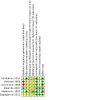
Risk of bias summary: review authors' judgements about each risk of bias item for each included study
Allocation
For an assessment of random sequence generation, one trial had low risk due to using a computational method (Palombo 2007), two trials had high risk due to utilising an EEG technician's judgement (Fletcher 1988), and odd/even hospital number (Gumerlock 1988), and the other three trials were assessed as unclear risk of bias due to unknown methods (AbuRahma 2010; Sandmann 1993; Zogogiannis 2011). Regarding allocation concealment, most trials did not report the allocation concealment method (Fletcher 1988; Gumerlock 1988; Palombo 2007; Zogogiannis 2011) (unclear risk), except for the two trials which used sealed envelopes (AbuRahma 2010; Sandmann 1993) (low risk).
Blinding
None of the trials reported on blinding of participants and surgeon (unclear risk). Only two trials reported psychologists and neurologists as outcome assessors (Palombo 2007; Sandmann 1993). Of these, one trial had low risk of blinding of outcome assessment due to identifying a blinded outcome assessor (Sandmann 1993) (low risk). The other trial did not clarify whether the assessors knew the randomisation code (Palombo 2007) (unclear risk).
Incomplete outcome data
All trials had low risk of bias for incomplete outcome data due to no loss‐to‐follow‐up or missing data. Potentially important outcomes were not measured, such as stroke severity in terms of functional outcome, and long‐term restenosis rate. One trial measured postoperative cognitive function (Palombo 2007). In addition, one trial randomised arteries rather than patients (Sandmann 1993), and the number of participants who had only unilateral procedures was not available by treatment group despite contact with the principal trialist. Overall, 441 participants had unilateral procedures and so we had to assume that these participants were roughly equally divided between the two treatment groups (the number of arteries randomised in each group was similar). In this trial, the numbers of stroke‐related deaths, strokes during surgery, and ipsilateral strokes were not reported by treatment group (and these data were not available from the authors). Therefore, we performed best‐ and worst‐case analyses for these outcomes. This was possible because the total number of each of these events was known, as was the total number of deaths and strokes by treatment group. The best‐case analysis assumed that the smallest possible number of events occurred in the shunted group, whilst the worst‐case analysis assumed that the smallest number of events occurred in the unshunted group.
Selective reporting
Selective reporting in three trials was assessed as unclear risk because these trials did not report prespecified outcomes (AbuRahma 2010; Fletcher 1988; Gumerlock 1988; Sandmann 1993). Only two studies reported all expected outcomes that were prespecified (Palombo 2007; Zogogiannis 2011) (low risk).
Other potential sources of bias
Several potential sources of bias, in addition to the bias mentioned in the above bias domains, were observed. All included trials had a low risk of other potential sources of bias, except for trials by Gumerlock 1988 and Sandmann 1993. The Gumerlock 1988 trial was considered to have a bias due to imbalance of surgeon assignment in each group. This trial detailed that each endarterectomy was administered by either a neurosurgeon or a senior neurosurgical resident, but no percentage of assignment was described. Unequal assignment might be a factor of bias risk due to unequal experience between the neurosurgeon and the neurosurgical resident. The other study by Sandmann 1993 reported in the discussion that the imbalance of experience for surgeons between groups influenced the outcomes. However, this trial did not report the surgeon number in each group.
Imbalanced cross‐over groups among eligible trials due to different monitoring methods were identified as another potential bias (Gumerlock 1988; Palombo 2007; Sandmann 1993). One trial considered using EEG and SEP in the unshunted group in case participants changed to the shunting group (Sandmann 1993). This trial found that 3% of unshunted participants changed to the shunting group when these participants showed evidence of ipsilateral ischaemia (Sandmann 1993). On the other hand, a study by Palombo 2007 used a stump pressure less than 50 mmHg as a criterion for changing to the shunted group, and Gumerlock 1988 did not have any monitoring method. Changing from shunting to unshunting was identified in two trials (Gumerlock 1988; Sandmann 1993). These trials mentioned that participants in the original shunted group were moved to the unshunted group due to difficulty with the shunting procedure.
Baseline characteristics and other procedures during surgery were also potentially biased. Between‐group baseline characteristics were almost similar (Gumerlock 1988), except for contralateral disease severity. This trial reported that participants in the shunted group had more severe disease in the contralateral artery, which may have biased the results against shunting (Gumerlock 1988). In addition, imbalance in surgical technique was addressed in one trial (Sandmann 1993). In this trial, more patching (57% versus 39%) and less plication and resection (or vein interposition) (39% versus 56%) were found in the shunted group than the unshunted group. In the same trial, some important characteristics including age, gender, and vascular risk factors were not reported (Sandmann 1993). It was unclear whether these variables were different or not. The other bias of concern was related to the randomisation method. One trial contained participants who underwent bilateral endarterectomies which may possibly have been randomised twice to different groups (Sandmann 1993). It appeared to be difficult to analyse some main outcomes (i.e. death and stroke) because these outcomes were calculated using a patient‐based denominator.
Effects of interventions
See: Table 1
Routine shunt versus no shunt
Deaths within 30 days of surgery
The overall risk of deaths in participants who had unilateral operations or bilateral operations using the same procedure was 1.5% (10/655). All deaths were either due to stroke or coronary artery disease. There was a comparable death rate between the shunted group and non‐shunted group (0.9% versus 2.1%) (OR 0.45, 95% CI 0.13 to 1.59, P = 0.22, low‐quality evidence) (Analysis 1.1).
1.1. Analysis.
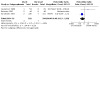
Comparison 1: Routine shunting versus no shunting, Outcome 1: Death from all causes within 30 days of surgery
Only four patients died of stroke‐related deaths (0.6%). Shunting showed a reduction in a stroke‐related death risk (best‐case: Peto OR 0.13, 95% CI 0.02 to 0.96, P = 0.05, low‐quality evidence (Analysis 1.2); worst‐case: Peto OR 0.37, 95% CI 0.05 to 2.62, P = 0.32, low‐quality evidence (Analysis 1.3)).
1.2. Analysis.
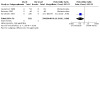
Comparison 1: Routine shunting versus no shunting, Outcome 2: Stroke‐related death within 30 days of surgery (best‐case)
1.3. Analysis.
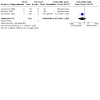
Comparison 1: Routine shunting versus no shunting, Outcome 3: Stroke‐related death within 30 days of surgery (worst‐case)
Any stroke (fatal or non‐fatal, ischaemic or haemorrhagic, ipsilateral or contralateral, carotid or vertebrobasilar)
During surgery, the combined risk of stroke during surgery between the shunt and no shunt groups was 2.7% (18/655). The best‐ and worst‐case analyses were similar between the shunt and no shunt groups (best‐case: Peto OR 0.42, 95% CI 0.16 to 1.07, P = 0.07, low‐quality evidence (Analysis 1.4); worst‐case: OR 1.71, 95% CI 0.57 to 5.09, P = 0.34, low‐quality evidence (Analysis 1.5)).
1.4. Analysis.
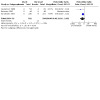
Comparison 1: Routine shunting versus no shunting, Outcome 4: Any stroke during surgery (best‐case)
1.5. Analysis.
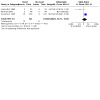
Comparison 1: Routine shunting versus no shunting, Outcome 5: Any stroke during surgery (worst‐case)
During surgery or within 24 hours of surgery, a total of six strokes were reported. The data were available from only two trials, of which one trial showed a reduction in the risk of stroke with shunting (Gumerlock 1988), and the other trial reported no stroke in either treatment group (Palombo 2007). The pooled result showed a reduction in the risk of stroke with shunting (Peto OR 0.15, 95% CI 0.03 to 0.78, P = 0.02, low‐quality evidence) (Analysis 1.6).
1.6. Analysis.
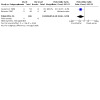
Comparison 1: Routine shunting versus no shunting, Outcome 6: Any stroke within 24 hours of surgery
An overall risk of stroke within 30 days of surgery was 4.0% (26/655). No difference in strokes between the shunted group and the non‐shunted group was demonstrated (Peto OR 0.77, 95% CI 0.35 to 1.69, P = 0.51, low‐quality evidence) (Analysis 1.7).
1.7. Analysis.
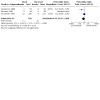
Comparison 1: Routine shunting versus no shunting, Outcome 7: Any stroke within 30 days of surgery
Ipsilateral stroke (fatal and non‐fatal, ischaemic and haemorrhagic)
During surgery, all strokes that occurred during surgery were ipsilateral. The risk of ipsilateral stroke in both groups combined was 24 per 1000 operations (18/737). The best‐ and worst‐case analyses were not different between groups (best‐case: Peto OR 0.42, 95% CI 0.17 to 1.08, P = 0.07, low‐quality evidence (Analysis 1.8); worst‐case: OR 1.71, 95% CI 0.58 to 5.09, P = 0.33, low‐quality evidence (Analysis 1.9)).
1.8. Analysis.
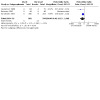
Comparison 1: Routine shunting versus no shunting, Outcome 8: Ipsilateral stroke during surgery (best‐case)
1.9. Analysis.
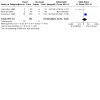
Comparison 1: Routine shunting versus no shunting, Outcome 9: Ipsilateral stroke during surgery (worst‐case)
Risk of ipsilateral stroke within 30 days of surgery was 30 per 1000 operations (22/737). For the best‐case analysis, there were fewer strokes in the shunted group when compared to the non‐shunted group (Peto OR 0.41, 95% CI 0.18 to 0.97, P = 0.04, low‐quality evidence (Analysis 1.10)). For worst case strokes, no difference in the worst‐case strokes between groups was reported (OR 1.22, 95% CI 0.46 to 3.23, P = 0.68, low‐quality evidence (Analysis 1.11)).
1.10. Analysis.

Comparison 1: Routine shunting versus no shunting, Outcome 10: Ipsilateral stroke within 30 days of surgery (best‐case)
1.11. Analysis.
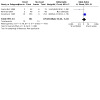
Comparison 1: Routine shunting versus no shunting, Outcome 11: Ipsilateral stroke within 30 days of surgery (worst‐case)
Stroke or death within 30 days of surgery
The overall risk of stroke or death in patients (with unilateral or bilateral identical operations only) was 4.9% (32/655). The best‐ and worst‐case analyses demonstrated an equivalent risk of stroke or death between the shunted group and the non‐shunted group (best‐case: Peto OR 0.62, 95% CI 0.31 to 1.27, P = 0.19, low ‐quality evidence (Analysis 1.12); worst‐case: Peto OR 0.81, 95% CI 0.40 to 1.66, P = 0.57, low‐quality evidence (Analysis 1.13)).
1.12. Analysis.
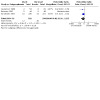
Comparison 1: Routine shunting versus no shunting, Outcome 12: Stroke or death within 30 days of surgery (best‐case)
1.13. Analysis.
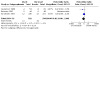
Comparison 1: Routine shunting versus no shunting, Outcome 13: Stroke or death within 30 days of surgery (worst‐case)
Other complications
The risks of wound haemorrhage or arterial rupture (0.3%) (Peto OR 1.19, 95% CI 0.07 to 19.47, very low‐quality evidence (Analysis 1.14)) and wound infection (0.2%) (Peto OR 0.16, 95% CI 0.00 to 8.12, very low‐quality evidence (Analysis 1.15)) were too small to reliably detect any difference between the two treatment groups. Nerve palsies were only recorded in one trial (Gumerlock 1988), and no difference was found between the two groups (3.6% risk overall) (Peto OR 1.81, 95% CI 0.30 to 10.82, very low‐quality evidence (Analysis 1.16)).
1.14. Analysis.
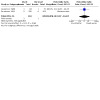
Comparison 1: Routine shunting versus no shunting, Outcome 14: Haemorrhage from operation site
1.15. Analysis.
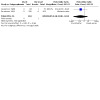
Comparison 1: Routine shunting versus no shunting, Outcome 15: Infection of operation site
1.16. Analysis.
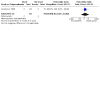
Comparison 1: Routine shunting versus no shunting, Outcome 16: Nerve palsy postoperatively
Cognitive function
In the most recent trial, all participants underwent neuropsychological testing before the operation and three weeks after surgery (Palombo 2007). This study did not observe any statistical difference between the two groups before or after carotid surgery with regard to neuropsychological testing.
Comparison of routine shunting versus selective shunting
A single RCT compared the results of routine shunting versus selective shunting based on stump pressure (AbuRahma 2010). There were no significant differences in clinical outcome between routine shunting and selective shunting. The perioperative stroke rate was 0% for routine shunting versus 2% for selective shunting (one major and one minor stroke, both related to carotid thrombosis). No participants died perioperatively. Combined perioperative TIA and stroke rates were 2% in the routine shunting versus 2.9% in the selective shunting groups. This study concluded that there were no significant differences between routine shunting and selective shunting.
Comparison of monitoring methods in selective shunting
EEG plus carotid stump pressure assessment versus stump pressure assessment alone
In Fletcher 1988 the risks of stroke or death per participant were not available from the published report. Five participants had a stroke within 24 hours of surgery (a risk of 3.5 per 100 operations). There was no significant difference between combined EEG monitoring and carotid pressure assessment and carotid pressure assessment alone. In the combined monitoring group, two of the three strokes occurred in participants with abnormal EEGs who were not shunted because the carotid artery pressure was greater than 50 mmHg. The other stroke occurred in a participant with a normal EEG and a carotid pressure of greater than 55 mmHg. In the group with carotid stump pressure assessment alone, the two strokes occurred in participants with pressures greater than 55 mmHg. The risk of wound haemorrhage was too low (2.8%) to reliably detect any difference between the treatment groups. The risk of nerve palsies was higher (7.7%) but there was no apparent difference between the two groups. Combined monitoring resulted in about 50% fewer shunts being inserted (12 per 100 operations) than carotid artery pressure assessment alone (26 per 100 operations), but the numbers were small and so are not reliable.
The use of an intraoperative algorithm based on cerebral oximetry with near‐infrared spectroscopy (NIRS) monitoring
Zogogiannis 2011 evaluated whether the use of an intraoperative algorithm based on cerebral oximetry with NIRS monitoring could help in the intraoperative decision for shunt placement, in people undergoing carotid endarterectomy. Two hundred and fifty‐three participants who underwent carotid endarterectomy under general anaesthesia were randomly allocated to Group A (83 participants) using NIRS monitoring and the suggested algorithm, Group B (84 participants) using NIRS monitoring without the algorithm and Group C (86 participants) who served as controls. The shunt placement criterion for Groups A and B was a 20% drop in ipsilateral regional saturation from the baseline value recorded before surgery. The rate of shunting was 27.7% in group A, 59.5% in group B and 100% in group C. Regarding the rate of postoperative neurologic deficits, no significant difference was found between the three groups. This study concluded that the use of a specific algorithm based on NIRS monitoring, in people undergoing carotid endarterectomy, may reduce the rate for shunt placement. However, no significant effect of the reduced rate of shunting on the rate of neurological deficit was found.
Discussion
This is an update of the review of shunting (routine or selective) for carotid endarterectomy and monitoring method for selective shunting. We did not find any new trials for inclusion. Therefore, only six included trials from the previous review were analysed (Chongruksut 2014).
Of the six included trials, we identified three trials that compared routine shunting with no shunting (Gumerlock 1988; Palombo 2007; Sandmann 1993); only these three trials could be included in the meta‐analysis. Two trials compared different monitoring methods in selective shunting (Fletcher 1988; Zogogiannis 2011), and one trial compared routine shunting with selective shunting (AbuRahma 2010). This trial showed no significant differences between routine shunting and selective shunting; however, too few outcomes were reported to detect any difference in the number of outcomes, especially strokes, between the two groups. More trials are needed.
Summary of main results
Routine shunting versus no shunting
Three major findings obtained from this meta‐analysis are highlighted. First, three included studies containing 655 participants showed that stroke‐related death within 30 days of surgery in the routine shunting group was less than in the no shunting group. Second, two eligible trials comprising 214 participants demonstrated fewer strokes within 24 hours of surgery after performing routine shunting than no shunting methods. Third, three included trials involving 737 participants showed that participants in the routine shunting group had a lower ipsilateral stroke rate within 30 days of surgery than participants in the no shunting group. Of these findings, only low‐evidence quality was available to suggest that the routine shunting method (as compared to no shunting) might result in a greater reduction in the risk of stroke‐related death within 30 days of surgery, stroke within 24 hours of surgery and of ipsilateral stroke within 30 days of surgery. Thus, surgeons should interpret these findings with caution.
Routine shunting versus selective shunting
There is no finding from meta‐analysis due to insufficient available evidence. One included study found no differences on stroke and death rates between routine shunting and selective shunting.
Different monitoring in selective shunting
There is a lack of meta‐analysis findings due to inadequate included studies. Of the available studies, there were no differences in operative risks between EEG plus carotid stump pressure assessment versus stump pressure assessment alone. Additionally, there was no difference in postoperative neurological deficits among combined NIRS plus a specific algorithm, NIRS alone, and control groups.
Overall completeness and applicability of evidence
The key objectives of this review were to determine whether routine shunting could reduce death or stroke rates and increase other complication rates following carotid endarterectomy compared to no shunting. The review findings limited the short‐term effect of the routine shunting due to restricted eligible studies comparing routine shunting and no shunting. These available analyses were based on very small numbers of outcome events. Thus, a large multicentre randomised trial is required to assess whether routine shunting reduces the risk of perioperative and long‐term death and stroke. Even a modest 25% reduction in the relative risk of perioperative stroke or death would result in approximately 15 fewer strokes and deaths per 1000 people undergoing endarterectomy. However, detecting this reliably (80% power, 5% significance level) would require between 3000 and 5000 participants. The duration of the follow‐up period in the included trials was very short. The main aim of shunting was to reduce the risk of perioperative stroke, but it is possibly associated with an increased risk of restenosis and late recurrent stroke. This risk was not assessed in the included trials.
Quality of the evidence
There were lower stroke rates within 24 hours of surgery and ipsilateral stroke rates within 30 days of surgery in routine shunting as compared to no shunting groups. Despite a greater reduction of the stroke risk in the routine shunting group, low‐quality evidence suggests that routine shunting may result in a large reduction in stroke risk when compared to no shunting. The low‐quality evidence was downgraded by serious risk of bias and imprecision. For serious risk of bias, one trial (Gumerlock 1988) used an odd/even hospital number as a method for randomisation. This method was likely to be biased as an investigator might not truly randomise due to different allocation number of participants. In addition, there was an imbalance in the numbers of participants in each group in this trial (53 shunt versus 65 no shunt), which might have been due to selective inclusion of participants, although it was reported that consecutive patients were entered. Other possible biases included unequal between‐group surgeons who had different experiences of endarterectomy (Gumerlock 1988; Sandmann 1993), different cross‐over shunting numbers (Gumerlock 1988; Sandmann 1993), and imbalance in the baseline severe disease of contralateral artery (Gumerlock 1988). In addition to these serious risks of bias, imprecision (which was revealed as a wide range in CIs) also explained the low quality of the evidence. Non‐significant differences in other outcomes also had low‐ and very low‐quality evidence which was downgraded, as mentioned, for the significant outcomes. It should be noted that evidence quality might be overestimated because several risk of bias domains in most included studies had unclear risk. In general, any unclear risk of bias would not be included for scoring the evidence quality.
Potential biases in the review process
The strength of this review is that we have attempted to minimise potential biases in the review process by searching for both published and unpublished data, and used an independent measure of evidence quality to prevent possible bias during assessment. However, one limitation during the review process was the inability to identify publication bias among the included studies due to an insufficient number of eligible studies. Other limitations were focussed on potential biases obtained from each included study. There were significant problems with the randomised trials. The method used for allocation concealment was inadequately reported in most of the included studies. The duration of follow‐up was short in all included studies. It was also unclear in most of the studies whether the outcome assessors had been blinded to treatment allocation. Previous studies have discussed that unblinded surgeons as assessors are associated with lower stroke and death rates than unblinded neurologists (Rerkasem 2009; Rothwell 1996). A possible explanation for this is that surgeons with high operative CEA risks are not likely to show their results (Rothwell 1996). Five of the trials reported complete outcome data.
Agreements and disagreements with other studies or reviews
Routine shunting versus no shunting
Our results showed lower stroke rates within 24 hours and lower ipsilateral stroke rates within 30 days with the routine shunting policy. In contrast with our results, a previous study has argued that inserting a routine shunt causes intimal injuries and embolisation. In addition, it is difficult to visualise the endpoint of the endarterectomy while inserting the shunt. These lead to an increased incidence of stroke (Halsey 1992). However, accurate data on these risks appear limited and anecdotal. Of this, the previous study noted that the increased incidence of stroke occurred in patients who had less severe ischaemia (Halsey 1992). Many studies have reported that routine shunting by experienced surgeons resulted in a low rate of shunt‐induced problems and a low rate of stroke and death, and is a cost‐effective procedure (Hamdan 1999; Hertzer 1997). Routine shunting avoids the need for test clamping of the common carotid artery (awake testing), which alone can cause an embolic stroke. Also, routine shunting obviates the need to intubate urgently, which may force an attempt to place the shunt under less than ideal conditions, possibly raising the risk of technical errors.
Routine shunting versus selective shunting
RCTs and reviews of this issue are very limited. Only a very recent retrospective trial has pointed out that postoperative stroke incidence between shunting and no shunting was similar (Levin 2020). In the same trial, the author further suggested that routine shunting had a more beneficial effect than selective shunting because routine shunting had a lower risk of postoperative stroke than selective shunting. A less experienced surgeon accounted for the higher stroke risk among patients with selective shunting (Levin 2020).
Selective shunting versus no shunting
There are no data currently available from RCTs regarding the benefits (or hazards) of selective shunting versus no shunting.
Comparison of different methods of monitoring in selective shunting
The data from randomised trials on which method should be used to select patients for selective shunting were very limited. We did not identify any new trials for inclusion in this updated review. Thus, only two studies were previously included in the latest version. The first trial (131 patients) compared EEG monitoring combined with an assessment of the carotid stump back pressure with carotid back pressure assessment alone (Fletcher 1988). This study was small and did not report details of randomisation, blinding of outcome assessment, or the numbers of participants in each group. Too few outcomes were reported to detect any difference in the number of strokes in the group that received EEG and carotid pressure assessment compared with the group that received carotid pressure assessment alone. The result found that EEG monitoring was more sensitive to cerebral ischaemia than carotid stump pressure. Of this, two strokes occurred during the operation in participants who had EEG changes but whose carotid stump pressure remained greater than 50 mmHg, while no participants had reduced pressure without EEG changes. Combined EEG and pressure monitoring may reduce the number of shunts inserted. However, it is difficult to interpret these data without reliable evidence that this monitoring method does not increase the risk of stroke. In addition, if EEG monitoring is not associated with fewer strokes, the costs of extra EEG monitoring may outweigh the costs saved by inserting fewer shunts.
The second trial assessed whether the use of an intraoperative algorithm based on cerebral oximetry with NIRS monitoring could help in the intraoperative decision for shunt placement in people undergoing carotid endarterectomy (Zogogiannis 2011). Two hundred and fifty‐three participants, who underwent carotid endarterectomy under general anaesthesia, were randomly allocated to Group A using NIRS monitoring and the suggested algorithm, Group B using NIRS monitoring without the algorithm , and Group C serving as controls. This study was small and did not report details of randomisation, allocation concealment, blinding of the participants and personnel, or outcome assessment. Shunt placement criterion for Group A and B was a 20% drop in ipsilateral regional saturation from the baseline value recorded before surgery. The shunting rate was 27.7% in group A, 59.5% in group B, and 100% in group C. For the rate of postoperative neurologic deficits, no significant difference was found between the three groups. However, too few outcomes (13 participants) were reported to detect any difference in the number of strokes in each group.
There are many other methods of monitoring for cerebral ischaemia that may be more sensitive than EEG, carotid pressure monitoring, and NIRS, but these have not been subjected to assessment in RCTs. The key question is not whether these methods can reliably detect cerebral ischaemia but whether shunting in these people results in lower perioperative morbidity and case fatality.
Authors' conclusions
Implications for practice.
The available data were too limited to conclusively support or refute the use of routine shunting in carotid endarterectomy when performed under general anaesthesia. Low‐quality evidence limits the reliability of any conclusions about reductions in stroke‐related death, stroke, or ipsilateral stroke early after surgery. There is also no reliable evidence to support the use of selective shunting. In those who wish to use selective shunting in people under general anaesthetic, there is again little evidence to support the use of one form of monitoring over another. Much more data are required to prove this.
Implications for research.
A large multicentre randomised trial is required to assess whether shunting reduces the risk of perioperative and long‐term death and stroke. Even a modest 25% reduction in the relative risk of perioperative stroke or death would result in approximately 15 fewer strokes and deaths per 1000 people undergoing endarterectomy. However, to detect this reliably (80% power, 5% significance level) would require between 3000 and 5000 participants. Two policies could be considered: routine shunting for all people undergoing carotid endarterectomy or selective shunting in those at high risk of intraoperative cerebral ischaemia. The trial would have to be truly randomised, have long‐term follow‐up (several years), and have blinded outcome assessment preferably by neurologists. Patients should be stratified by age, sex, degree of ipsilateral and contralateral internal carotid stenosis, the experience of the surgeon, the use of patching in selective shunting, and the method of monitoring of cerebral ischaemia.
As regards the method of monitoring in selective shunting, until the efficacy of shunting has been demonstrated, further trials of the method of monitoring are probably not merited. However, a systematic review of the sensitivity and specificity of the various methods of monitoring for cerebral ischaemia would be worthwhile to identify the best method of monitoring to be used in any trial of selective shunting (Irwig 1994).
What's new
| Date | Event | Description |
|---|---|---|
| 24 May 2021 | New citation required but conclusions have not changed | There have been no changes to the results. |
| 24 May 2021 | New search has been performed | The searches have been updated and completed to April 2021. No new trials were found for inclusion in this updated review. The review has six included trials with 1270 participants. The results are unchanged. |
History
Protocol first published: Issue 1, 1995 Review first published: Issue 1, 1995
| Date | Event | Description |
|---|---|---|
| 9 August 2013 | New citation required but conclusions have not changed | New first author. |
| 9 August 2013 | New search has been performed | The searches have been updated and completed to August 2013. We have identified and included two new randomised trials, bringing the total number of included studies to six, involving 1270 participants. The conclusions of the review have not changed. |
| 3 May 2009 | New citation required but conclusions have not changed | Change of authorship. |
| 3 May 2009 | New search has been performed | The searches have been updated and completed to November 2008. In the years since the searches were last completed in 2000, we have identified one new randomised trial (Palombo 2007), which assesses the effect of shunting versus non‐shunting during carotid endarterectomy. This new trial involved 48 patients in each group and there were no outcome events in either group. In this updated version, the conclusions have not therefore changed materially from the previous review. |
| 12 September 2008 | Amended | Converted to new review format. |
| 10 August 2001 | New search has been performed | In the six years since this review was first published there have been a number of retrospective comparisons of selective shunt use versus systematic shunt use, as well as a prospective comparison of different shunt types, but there have been no new prospective randomised controlled trials relevant to this review. |
Acknowledgements
This study was partially supported by Chiang Mai University. We thank: Professor Peter Langhorne, Professor Daniel Bereczki, and Aryelly Rodriguez for commenting on this manuscript; Mr Richard Bond and Professor Peter Rothwell for their contribution to previous versions of this review.
Ongoing trials
If anyone is aware of any randomised trials that we have omitted, please contact Professor Kittipan Rerkasem.
Appendices
Appendix 1. MEDLINE search strategy
MEDLINE 2013 to 2021
Term used "carotid endarterectomy"
MEDLINE (Ovid) 2013 to 2021 and Cochrane Central Register of Controlled Trials (lines 1 to 12)
1. Endarterectomy, Carotid/
2. exp Carotid Arteries/su [Surgery]
3. exp Carotid Artery Diseases/su [Surgery]
4. exp carotid arteries/
5. exp carotid artery diseases/
6. carotid.tw.
7. 4 or 5 or 6
8. endarterectomy/
9. (endarterectom$ or surg$).tw.
10. 8 or 9
11. 7 and 10
12. 1 or 2 or 3 or 11
13. randomized controlled trial.pt.
14. controlled clinical trial.pt.
15. randomized.ab.
16. placebo.ab.
17. clinical trials as topic.sh.
18. random$.ab.
19. shunt$.tw.
20. trial.ti.
21. or/13‐20
22. exp animals/ not humans.sh.
23. 21 not 22
Appendix 2. Embase search strategy
Embase 2013 to 2021
Terms used "carotid endarterectomy" and "carotid surgery"
Embase (Ovid) 2013 to 2021
1 carotid endarterectomy/
2 carotid artery surgery/
3 exp carotid artery disease/su
4 exp carotid artery/5 exp carotid artery disease/ 6 4 or 5
7 artery surgery/ or endarterectomy/ or vascular surgery/ or surgery/
8 6 and 7
9 (carotid adj5 (endarterect$ or surgery)).tw.
10 1 or 2 or 3 or 8 or 9
11 Randomized Controlled Trial/ or "randomized controlled trial (topic)"/
12 Randomization/
13 Controlled clinical trial/ or "controlled clinical trial (topic)"/
14 control group/ or controlled study/
15 clinical trial/ or "clinical trial (topic)"/ or phase 1 clinical trial/ or phase 2 clinical trial/ or phase 3 clinical trial/ or
phase 4 clinical trial/
16 crossover procedure/
17 single blind procedure/ or double blind procedure/ or triple blind procedure/
18 placebo/ or placebo effect/
19 (random$ or RCT or RCTs).tw.
20 (controlled adj5 (trial$ or stud$)).tw.
21 (clinical$ adj5 trial$).tw.
22 clinical trial registration.ab.
23 ((control or treatment or experiment$ or intervention) adj5 (group$ or subject$ or patient$)).tw.
24 (quasi‐random$ or quasi random$ or pseudo‐random$ or pseudo random$).tw.
25 ((control or experiment$ or conservative) adj5 (treatment or therapy or procedure or manage$)).tw.
26 ((singl$ or doubl$ or tripl$ or trebl$) adj5 (blind$ or mask$)).tw.
27 (cross‐over or cross over or crossover).tw.
28 (placebo$ or sham).tw.
29 trial.ti.
30 (assign$ or allocat$).tw.
31 controls.tw.
32 shunting/ or shunt$.tw.
33 or/11‐32
34 10 and 33
Appendix 3. Search strategy for other resources
ClinicalTrial.gov (2013 to 2021)
AREA[StudyType] EXPAND[Term] COVER[FullMatch] "Interventional" AND AREA[ConditionSearch] carotid endarterectomy AND AREA[StdAge] EXPAND[Term] COVER[FullMatch] ( "Adult" OR "Older Adult" )
WHO ICTRP (2013 to 2021)
Intervention: carotid endarterectomy; Recruitment Status is: ALL
Data and analyses
Comparison 1. Routine shunting versus no shunting.
| Outcome or subgroup title | No. of studies | No. of participants | Statistical method | Effect size |
|---|---|---|---|---|
| 1.1 Death from all causes within 30 days of surgery | 3 | 655 | Peto Odds Ratio (Peto, Fixed, 95% CI) | 0.45 [0.13, 1.59] |
| 1.2 Stroke‐related death within 30 days of surgery (best‐case) | 3 | 655 | Peto Odds Ratio (Peto, Fixed, 95% CI) | 0.13 [0.02, 0.96] |
| 1.3 Stroke‐related death within 30 days of surgery (worst‐case) | 3 | 655 | Peto Odds Ratio (Peto, Fixed, 95% CI) | 0.37 [0.05, 2.62] |
| 1.4 Any stroke during surgery (best‐case) | 3 | 655 | Peto Odds Ratio (Peto, Fixed, 95% CI) | 0.42 [0.16, 1.07] |
| 1.5 Any stroke during surgery (worst‐case) | 3 | 655 | Odds Ratio (IV, Fixed, 95% CI) | 1.71 [0.57, 5.09] |
| 1.6 Any stroke within 24 hours of surgery | 2 | 214 | Peto Odds Ratio (Peto, Fixed, 95% CI) | 0.15 [0.03, 0.78] |
| 1.7 Any stroke within 30 days of surgery | 3 | 655 | Peto Odds Ratio (Peto, Fixed, 95% CI) | 0.77 [0.35, 1.69] |
| 1.8 Ipsilateral stroke during surgery (best‐case) | 3 | 737 | Peto Odds Ratio (Peto, Fixed, 95% CI) | 0.42 [0.17, 1.08] |
| 1.9 Ipsilateral stroke during surgery (worst‐case) | 3 | 737 | Odds Ratio (IV, Fixed, 95% CI) | 1.71 [0.58, 5.09] |
| 1.10 Ipsilateral stroke within 30 days of surgery (best‐case) | 3 | 737 | Peto Odds Ratio (Peto, Fixed, 95% CI) | 0.41 [0.18, 0.97] |
| 1.11 Ipsilateral stroke within 30 days of surgery (worst‐case) | 3 | 737 | Odds Ratio (IV, Fixed, 95% CI) | 1.22 [0.46, 3.23] |
| 1.12 Stroke or death within 30 days of surgery (best‐case) | 3 | 655 | Peto Odds Ratio (Peto, Fixed, 95% CI) | 0.62 [0.31, 1.27] |
| 1.13 Stroke or death within 30 days of surgery (worst‐case) | 3 | 655 | Peto Odds Ratio (Peto, Fixed, 95% CI) | 0.81 [0.40, 1.66] |
| 1.14 Haemorrhage from operation site | 2 | 641 | Peto Odds Ratio (Peto, Fixed, 95% CI) | 1.19 [0.07, 19.47] |
| 1.15 Infection of operation site | 2 | 641 | Peto Odds Ratio (Peto, Fixed, 95% CI) | 0.16 [0.00, 8.12] |
| 1.16 Nerve palsy postoperatively | 1 | 138 | Peto Odds Ratio (Peto, Fixed, 95% CI) | 1.81 [0.30, 10.82] |
Characteristics of studies
Characteristics of included studies [ordered by study ID]
AbuRahma 2010.
| Study characteristics | ||
| Methods | Method of randomisation: unknown Concealment: sealed envelopes that were opened just before surgery Blinding: not reported Cross‐overs: none (ITT analysis) Exclusions during trial: none Loss to follow‐up: none | |
| Participants | USA 200 participants, 200 operations Routine shunting: 98 operations Selective shunting: 102 operations Age: 45 to 89 years, mean 68 years Gender: 48% male, 52% female Comparability: age, gender, vascular risk factors similar between 2 groups More asymptomatic ipsilateral arteries in routine shunting group: 58% versus 53% Contralateral artery stenosis (mean %) routine shunting group: 38%; selective shunting group: 40% | |
| Interventions | Treatment: selective shunting group; shunt selected if systolic stump pressure < 40 mmHg Control: routine shunting group All operations under general anaesthetic; unknown patching rate | |
| Outcomes | TIA, stroke, combined stroke/TIA, death, bleeding, myocardial infarction, congestive heart failure, asymptomatic carotid thrombosis, recurrent laryngeal injury, all complications, number of shunted arteries | |
| Notes | Exclusion: none Follow‐up: 30 days | |
| Risk of bias | ||
| Bias | Authors' judgement | Support for judgement |
| Random sequence generation (selection bias) | Unclear risk | Quote: "200 CEA patients were randomised into" However, the randomised method was unknown. |
| Allocation concealment (selection bias) | Low risk | Quote: "Randomization was done using sealed envelopes that were open just before surgery". |
| Blinding of participants and personnel (performance bias) All outcomes | Unclear risk | Not reported |
| Blinding of outcome assessment (detection bias) All outcomes | Unclear risk | Not reported |
| Incomplete outcome data (attrition bias) All outcomes | Low risk | No loss to follow‐up in either group |
| Selective reporting (reporting bias) | Unclear risk | Study authors did not report prespecified outcome. |
| Other bias | Low risk | No other potential biases |
Fletcher 1988.
| Study characteristics | ||
| Methods | Method of randomisation: randomisation was based on EEG technician availability. Blinding: not reported Cross‐overs: none Exclusions during trial: none Loss to follow‐up: none | |
| Participants | Australia 131 participants, 142 operations EEG/pressure monitoring: 72 operations Pressure assessment alone: 70 operations Age: 36 to 70 years, mean 58 years Gender: 70% male, 30% female Comparability: age, gender, vascular risk factors similar between 2 groups More asymptomatic ipsilateral arteries in pressure group: 1% versus 11% Contralateral artery stenosis unknown | |
| Interventions | Treatment: EEG monitoring and carotid stump back pressure assessment; shunt selected if ipsilateral EEG change (loss of voltage/activity) within 3 minutes of clamping and back pressure < 50 mmHg Control: carotid stump back pressure assessment alone; shunt selected if back pressure < 50 mmHg All operations under general anaesthetic; unknown patching rate | |
| Outcomes | Death plus stroke‐related death, any stroke (during the operation), ipsilateral stroke, haemorrhage from operation site, nerve palsies, number of shunted arteries | |
| Notes | Exclusion: none Follow‐up: duration unknown | |
| Risk of bias | ||
| Bias | Authors' judgement | Support for judgement |
| Random sequence generation (selection bias) | High risk | Quote: "Randomization was dependent on availability of an EEG technician". |
| Allocation concealment (selection bias) | Unclear risk | Not reported |
| Blinding of participants and personnel (performance bias) All outcomes | Unclear risk | Not reported |
| Blinding of outcome assessment (detection bias) All outcomes | Unclear risk | Not reported |
| Incomplete outcome data (attrition bias) All outcomes | Low risk | No missing data |
| Selective reporting (reporting bias) | Unclear risk | Study authors did not report prespecified outcome. |
| Other bias | Low risk | No other potential biases |
Gumerlock 1988.
| Study characteristics | ||
| Methods | Method of randomisation: odd/even hospital number (patient randomised) Blinding: not reported Cross‐overs: shunt: 3 patients not shunted (analysed in original group) Exclusions during trial: none Loss to follow‐up: none | |
| Participants | USA Shunt: 53 participants (63 operations) No shunt: 65 participants (75 operations) Age: range 40 to 79 years Gender: unknown Comparability: age, vascular risk factors, indication for operation, degree of stenosis in operated artery similar between treatment and control More severe contralateral artery disease in shunt group: stenosis > 90% to 32% versus 19% | |
| Interventions | Treatment: Javid shunt Control: no shunt All operations done under general anaesthetic; no monitoring; primary closure | |
| Outcomes | Death plus stroke‐related death, any stroke (during operation, within 24 hours and 30 days of operation), ipsilateral stroke, haemorrhage from operation site, infection at operation site, nerve palsy | |
| Notes | Exclusions: none Follow‐up: 30 days | |
| Risk of bias | ||
| Bias | Authors' judgement | Support for judgement |
| Random sequence generation (selection bias) | High risk | The random method was conducted using an odd/even hospital number. |
| Allocation concealment (selection bias) | Unclear risk | Not reported |
| Blinding of participants and personnel (performance bias) All outcomes | Unclear risk | Not reported |
| Blinding of outcome assessment (detection bias) All outcomes | Unclear risk | Not reported |
| Incomplete outcome data (attrition bias) All outcomes | Low risk | No missing data |
| Selective reporting (reporting bias) | Unclear risk | Study authors did not report prespecified outcome. |
| Other bias | High risk | Quote: "All CEs were performed by either the attending neurosurgeon or by a senior neurosurgical resident under direct supervision". No data showed the percentage of operations done by residents in each arm. Obviously residents had less experience than the attending physician, even though such operations were done under direct supervision. This might be a risk of bias, if there was a significant proportion of residents as operators in 1 group. Other possible biases: different cross‐over shunting numbers and greater severe disease of contralateral artery in the shunting group |
Palombo 2007.
| Study characteristics | ||
| Methods | Randomisation was done by a random number generator using computational method. Concealment: not reported Blinding outcome assessment: unclear No cross‐overs Exclusions during trial: unclear Loss to follow‐up: none | |
| Participants | Italy 96 participants Shunt: 48 participants; no shunt: 48 participants Age: mean 71.45 years Gender: 67% male, 33% female Comparability: age, gender, vascular risk factors, indication for operation, degree of ipsilateral/contralateral stenosis in each group not given Overall: 66% of all patients had asymptomatic severe carotid stenosis | |
| Interventions | Treatment: Pruitt‐Inahara shunt Control: no shunt (shunted if stump pressure < 50 mmHg) All operations done under general anaesthetic with stump pressure measurement All operations done by eversion carotid endarterectomy technique | |
| Outcomes | Death and stroke, cerebral CT scan, serum concentration of S100 protein, neuron specific enolase, interleukin‐6, neuropsychological test | |
| Notes | Exclusions: contralateral severe carotid stenosis or carotid occlusion, right‐side involvement, age greater than 80 years, dementia, previous disabling stroke, brain tumour, neuroleptic therapy and Mini Mental State Examination score < 24 points Follow‐up: unclear | |
| Risk of bias | ||
| Bias | Authors' judgement | Support for judgement |
| Random sequence generation (selection bias) | Low risk | Quote: "Randomisation was done by a random number generator using computational method that was managed by a statistician." |
| Allocation concealment (selection bias) | Unclear risk | Not reported |
| Blinding of participants and personnel (performance bias) All outcomes | Unclear risk | Not reported |
| Blinding of outcome assessment (detection bias) All outcomes | Unclear risk | Neuropsychological test was done by psychologists but author did not report whether they knew the randomisation code |
| Incomplete outcome data (attrition bias) All outcomes | Low risk | No participants lost to follow‐up |
| Selective reporting (reporting bias) | Low risk | Study authors reported all prespecified outcomes. |
| Other bias | Low risk | No other potential biases |
Sandmann 1993.
| Study characteristics | ||
| Methods | Method of randomisation: artery randomisation with unknown method Blinded outcome assessment Cross‐overs: shunt: 35 participants not shunted; no shunt: 10 participants shunted (all participants analysed in original group) Exclusions during trial: none Loss to follow‐up: none | |
| Participants | Germany 472 participants, 441 with unilateral operations Shunt: 250 operations No shunt: 253 operations Age: mean 64 years Gender: 70% male, 30% female Comparability: age, gender, vascular risk factors, indication for operation, degree of ipsilateral/contralateral stenosis in each group not given Overall: all had ipsilateral stenosis > 70% (20% asymptomatic); 20% had contralateral stenosis > 80%. | |
| Interventions | Treatment: Javid shunt Control: no shunt (shunted if significant changes on monitoring) All operations done under general anaesthetic with EEG/SEP monitoring; at end of operation plication, resection, vein interposition were performed to achieve laminar flow on Doppler. | |
| Outcomes | Death plus stroke‐related death, any stroke (during the operation and within 30 days), ipsilateral stroke, haemorrhage from operation site, infection at operation site | |
| Notes | Exclusions: bilateral simultaneous endarterectomies, simultaneous reconstruction of supra‐aortic branch and carotid bifurcation Follow‐up: 30 days | |
| Risk of bias | ||
| Bias | Authors' judgement | Support for judgement |
| Random sequence generation (selection bias) | Unclear risk | Quote: "the use of the intraluminal Javid shunt was prospectively randomised in a continuous series of 503 CEs". However, the random method was not specified. |
| Allocation concealment (selection bias) | Low risk | The author mentioned that the allocation concealment was administered using opaque, sequentially‐numbered sealed envelopes. |
| Blinding of participants and personnel (performance bias) All outcomes | Unclear risk | Not reported |
| Blinding of outcome assessment (detection bias) All outcomes | Low risk | Based on unpublished data, a neurologist who was blinded to treatment allocation assessed participants postoperatively. |
| Incomplete outcome data (attrition bias) All outcomes | Low risk | Based on unpublished data, there was no loss to follow‐up in this study. |
| Selective reporting (reporting bias) | Unclear risk | Study authors did not report prespecified outcome. |
| Other bias | High risk | Possible biases included unequal cross‐over shunting number between groups, not to mention the possible sources of bias (i.e. age, gender, and vascular risk factors), imbalance in a surgical technique (patching in shunting (56%) versus no shunting (39%)), imbalance in number of experienced surgeon between groups, and included bilateral endarterectomy. |
Zogogiannis 2011.
| Study characteristics | ||
| Methods | Method of randomisation: unknown Blinding: not reported Cross‐overs: none Exclusions during trial: none Loss to follow‐up: none | |
| Participants | Greece
253 participants, 253 operations
Age: 48 to 82 years, mean 68.6 years Gender: 73% male, 27% female Comparability: age, gender, BMI, vascular risk factors, coronary artery disease, haemodialysis similar between 2 groups Asymptomatic ipsilateral arteries: 67.4% (Group A), 66.7% (Group B), 67.4 (Group C) Contralateral artery stenosis unknown |
|
| Interventions | Treatment: intervention group
In these 2 groups, the surgeon was notified when a 20% drop from the baseline was found.
All operations under general anaesthetic; unknown patching rate |
|
| Outcomes | Number of shunted arteries, neurological deficit, cardiovascular ischaemia | |
| Notes | Exclusion: none Follow‐up: duration unknown | |
| Risk of bias | ||
| Bias | Authors' judgement | Support for judgement |
| Random sequence generation (selection bias) | Unclear risk | Quote: "This prospective, controlled, randomised study in two Greek institutions. . ." However, the method for random sequence generation was not mentioned. |
| Allocation concealment (selection bias) | Unclear risk | Not reported |
| Blinding of participants and personnel (performance bias) All outcomes | Unclear risk | Not reported |
| Blinding of outcome assessment (detection bias) All outcomes | Unclear risk | Not reported |
| Incomplete outcome data (attrition bias) All outcomes | Low risk | No missing data |
| Selective reporting (reporting bias) | Low risk | Study authors reported all prespecified outcomes. |
| Other bias | Low risk | No other potential biases |
BMI: body mass index CEs: carotid endarterectomies CEA: carotid endarterectomy CT: computerised tomography EEG: electroencephalogram ITT: intention to treat SEP: somatosensory evoked potential TIA: transient ischaemic attack
Differences between protocol and review
In the search methods, we removed the following journals and conference proceeding as we are no longer searching them.
American Journal of Surgery
British Journal of Surgery
World Journal of Surgery
AGM of the Vascular Surgical Society (UK)
AGM of the Association of Surgeons of Great Britain and Ireland
AHA Stroke Conference
Annual Meeting of the Society for Vascular Surgery (USA)
European Stroke Conference
Details of summary of findings and assessment of the certainty of the evidence were added according to the guidance in the Cochrane Handbook for Systematic Reviews of Interventions.
Authorship was changed to BC, SN, AR, SO, DPJH, KR. Their roles are identified in the Contributions of authors section.
Contributions of authors
Busaba Chuatrakoon, Sothida Nantakool, Amaraporn Rerkasem, Saritphat Orrapin, Dominic PJ Howard, Kittipan Rerkasem: designing a conceptual framework; drafting, revising, and approving the final manuscript
Busaba Chuatrakoon, Sothida Nantakool, Kittipan Rerkasem: involved in data collection, data analysis, and data selection
Busaba Chuatrakoon, Amaraporn Rerkasem: assessing risk of bias
Busaba Chuatrakoon, Sothida Nantakool: evaluating quality of evidence
Sources of support
Internal sources
Faculty of Medicine, Chiang Mai University, Thailand
Research Institute for Health Sciences, Chiang Mai University, Chiang Mai, Thailand
External sources
Stroke Prevention Research Unit, Nuffield Department of Clinical Neurosciences, University of Oxford, UK
Thailand Research Fund, Thailand
Declarations of interest
Busaba Chuatrakoon has no conflict of interest.
Sothida Nantakool has no conflict of interest.
Amaraporn Rerkasem has no conflict of interest.
Saritphat Orrapin has no conflict of interest.
Dominic PJ Howard has no conflict of interest.
Kittipan Rerkasem has no conflict of interest.
New search for studies and content updated (no change to conclusions)
References
References to studies included in this review
AbuRahma 2010 {published data only}
- Aburahma AF, Stone PA, Hass SM, Dean LS, Habib J, Keiffer T, et al. Prospective randomized trial of routine versus selective shunting in carotid endarterectomy based on stump pressure. Journal of Vascular Surgery 2010;51:1133-8. [DOI] [PubMed] [Google Scholar]
Fletcher 1988 {published data only}
- Fletcher JP, Morris JGL, Little JM, Kershaw LZ. EEG monitoring during carotid endarterectomy. Australian and New Zealand Journal of Surgery 1988;58:285-8. [DOI] [PubMed] [Google Scholar]
Gumerlock 1988 {published and unpublished data}
- Gumerlock MK, Neuwelt EA. Carotid endarterectomy: to shunt or not to shunt. Stroke 1988;19:1485-90. [DOI] [PubMed] [Google Scholar]
Palombo 2007 {published data only}
- Palombo D, Lucertini G, Mambrini S, Zettin M. Subtle cerebral damage after shunting vs non shunting during carotid endarterectomy. European Journal of Vascular and Endovascular Surgery 2007;34:546-51. [DOI] [PubMed] [Google Scholar]
Sandmann 1993 {published and unpublished data}
- Sandmann W, Kolvenbach R, Willeke F. Risks and benefits of shunting in carotid endarterectomy. Stroke 1993;24:1098. [DOI] [PubMed] [Google Scholar]
- Sandmann W, Willeke F, Kovenbach R, Benecke R, Godehardt E. To shunt or not to shunt: the definite answer with a randomized study. In: Veith FJ, editors(s). Current Critical Problems in Vascular Surgery. Vol. 5. St Louis, Missouri: Quality Medical Publishing Inc, 1993:434-40. [Google Scholar]
Zogogiannis 2011 {published data only}
- Zogogiannis ID, Iatrou CA, Lazarides MK, Vogiatzaki TD, Wachtel MS, Chatzigakis PK, et al. Evaluation of an intraoperative algorithm based on near-infrared refracted spectroscopy monitoring, in the intraoperative decision for shunt placement, in patients undergoing carotid endarterectomy. Middle East Journal of Anesthesiology 2011;21:367-73. [PubMed] [Google Scholar]
Additional references
ACAS 1995
- Executive Committee for the Asymptomatic Carotid Atherosclerosis study. Endarterectomy for asymptomatic carotid artery stenosis. JAMA 1995;273:1421-8. [PubMed] [Google Scholar]
ACST 2004
- ACST Collaborative Group. Prevention of disabling and fatal strokes by successful carotid endarterectomy in patients without recent neurological symptoms: randomised controlled trial. MRC Asymptomatic Carotid Surgery Trial (ACST) Collaborative Group. Lancet 2004;363:1491-502. [DOI] [PubMed] [Google Scholar]
APT 1994
- Antiplatelet Trialists Collaboration. Collaborative overview of trials of antiplatelet therapy - I: Prevention of death, myocardial infarction, and stroke by prolonged antiplatelet therapy in various categories of patients. BMJ 1994;308:81-106. [PMC free article] [PubMed] [Google Scholar]
Benjamin 1993
- Benjamin ME, Silva MB, Watt C, McCaffrey MT, Burford-Foggs A, Flinn WR. Awake patient monitoring to determine the need for shunting during carotid endarterectomy. Surgery 1993;114:673-81. [DOI] [PubMed] [Google Scholar]
Bond 2002
- Bond R, Warlow CP, Naylor AR, Rothwell PM. Variation in surgical and anaesthetic technique and associations with operative risk in the European Carotid Surgery Trial: implications for trials of ancillary techniques. European Journal of Vascular and Endovascular Surgery 2002;23:117-26. [DOI] [PubMed] [Google Scholar]
Buche 1988
- Buche M, Grenier Y, Schoevaerdts JC, Jaumin P, Ponlot R, Chalant CH. Comparative results after endarterectomy of internal carotid artery performed with or without a shunt. Journal of Cardiovascular Surgery 1988;29:428-31. [PubMed] [Google Scholar]
Connolly 1977
- Connolly JE, Jack HM, Stemmer EA. Improved results with carotid endarterectomy. Annals of Surgery 1977;186:334-42. [DOI] [PMC free article] [PubMed] [Google Scholar]
Deeks 2022
- Deeks JJ, Higgins JPT, Altman DG (editors). Chapter 10: Analysing data and undertaking meta-analyses. In: Higgins JPT, Thomas J, Chandler J, Cumpston M, Li T, Page MJ, et al (editors). Cochrane Handbook for Systematic Reviews of Interventions version 6.3 (updated February 2022). Cochrane, 2022. Available from training.cochrane.org/handbook/current/chapter-10.
ECST 1998
- European Carotid Surgery Trialists Collaborative Group. Randomised trial of endarterectomy for recently symptomatic carotid stenosis: final results of the MRC European Carotid Surgery Trial (ECST). Lancet 1998;351:1379-87. [PubMed] [Google Scholar]
Evans 1985
- Evans WE, Hayes JP, Waltke, EA, Vermilion BD. Optimal cerebral monitoring during carotid endarterectomy: neurologic response under local anaesthetic. Journal of Vascular Surgery 1985;2:775-7. [PubMed] [Google Scholar]
Fode 1986
- Fode NC, Sundt TM, Robertson JT, Peerless SJ, Shields CB. Multicenter retrospective review of results and complications of carotid endarterectomy in 1981. Stroke 1986;17:370-5. [DOI] [PubMed] [Google Scholar]
Forssell 1995
- Forssell C, Kitzing P, Bergqvist D. Cranial nerve injuries after carotid surgery. A prospective study of 663 operations. European Journal of Vascular Surgery 1995;10:445-9. [DOI] [PubMed] [Google Scholar]
Girn 2008
- Girn HR, Dellagrammaticas D, Laughlan K, Gough MJ, for the GALA Trial Collaborators. Carotid endarterectomy: technical practices of surgeons participating in the GALA trial. European Journal of Vascular and Endovascular Surgery 2008;36:385-9. [DOI] [PubMed] [Google Scholar]
Green 1985
- Green RM, Messick WJ, Ricotta JJ, Charlton MH, Satran R, McBride MM, et al. Benefits, shortcomings, and costs of EEG monitoring. Annals of Surgery 1985;201:785-92. [DOI] [PMC free article] [PubMed] [Google Scholar]
Halsey 1992
- Halsey JH Jr. Risks and benefits of shunting in carotid endarterectomy. The International Transcranial Doppler Collaborators. Stroke 1992;23:1583-7. [DOI] [PubMed] [Google Scholar]
Hamdan 1999
- Hamdan AD, Pomposelli FB Jr, Gibbons GW, Campbell DR, LoGerfo FW. Perioperative strokes after 1001 consecutive carotid endarterectomy procedures without an electroencephalogram: incidence, mechanism, and recovery. Archives of Surgery 1999;134:412-5. [DOI] [PubMed] [Google Scholar]
Hertzer 1997
- Hertzer NR, O'Hara PJ, Mascha EJ, Krajewski LP, Sullivan TM, Beven EG. Early outcome assessment for 2228 consecutive carotid endarterectomy procedures: the Cleveland Clinic experience from 1989 to 1995. Journal of Vascular Surgery 1997;26:1-10. [DOI] [PubMed] [Google Scholar]
Higgins 2011
- Higgins JPT, Green S (editors). Cochrane Handbook for Systematic Reviews of Interventions Version 5.1.0 [updated March 2011]. The Cochrane Collaboration, 2011. Available from training.cochrane.org/handbook/archive/v5.1.
Irwig 1994
- Irwig L, Tosteson ANA, Gatsonis C, Lau J, Colditz G, Chalmers TC, et al. Guidelines for meta-analyses evaluating diagnostic tests. Annals of Internal Medicine 1994;120:667-76. [DOI] [PubMed] [Google Scholar]
Javid 1979
- Javid H, Julian OC, Dye WS, Hunter JA, Najafi H, Goldin MD, et al. Seventeen-year experience with routine shunting in carotid surgery. World Journal of Surgery 1979;3:167-77. [DOI] [PubMed] [Google Scholar]
Lefebvre 2021
- Lefebvre C, Glanville J, Briscoe S, Littlewood A, Marshall C, Metzendorf M-I, et al. Technical Supplement to Chapter 4: Searching for and selecting studies. In: Higgins JPT, Thomas J, Chandler J, Cumpston M, Li T, Page MJ, et al (editors). Cochrane Handbook for Systematic Reviews of Interventions Version 6.2 (updated February 2021). Cochrane 2021. Available from training.cochrane.org/handbook/archive/v6.2.
Levin 2020
- Levin SR, Farber A, Goodney PP, Schermerhorn ML, Patel VI, Arinze N, et al. Shunt intention during carotid endarterectomy in the early symptomatic period and perioperative stroke risk. Journal of Vascular Surgery 2020;72:1385-94. [DOI] [PubMed] [Google Scholar]
Lewis 2008
- Lewis SC, Warlow CP, Bodenham AR, Colam B, Rothwell PM, Torgerson D, et al. General anaesthesia versus local anaesthesia for carotid surgery (GALA): a multicentre, randomised controlled trial. Lancet 2008;372:2132-42. [DOI] [PubMed] [Google Scholar]
NASCET 1991
- North American Symptomatic Carotid Endarterectomy Trial Collaborators. Beneficial effect of carotid endarterectomy in symptomatic patients with high-grade carotid stenosis. New England Journal of Medicine 1991;325:445-53. [DOI] [PubMed] [Google Scholar]
Ott 1980
- Ott DA, Cooley DA, Chapa L, Coelho A. Carotid endarterectomy without temporary intraluminal shunt. Study of 309 consecutive operations. Annals of Surgery 1980;191:708-14. [DOI] [PMC free article] [PubMed] [Google Scholar]
Ouriel 1987
- Ouriel K, Green RM. Clinical and technical factors influencing recurrent carotid stenosis and occlusion after endarterectomy. Journal of Vascular Surgery 1987;5:702-6. [PubMed] [Google Scholar]
Prioleau 1977
- Prioleau WH, Aiken AF, Hairston P. Carotid endarterectomy. Neurologic complications as related to surgical techniques. Annals of Surgery 1977;185:678-83. [DOI] [PMC free article] [PubMed] [Google Scholar]
Reddy 1987
- Reddy K, West M, Anderson B. Carotid endarterectomy without indwelling shunts and intraoperative electrophysiologic monitoring. Canadian Journal of Neurological Sciences 1987;14:131-5. [DOI] [PubMed] [Google Scholar]
Rerkasem 2009
- Rerkasem K, Rothwell PM. Temporal trends in the risks of stroke and death due to carotid endarterectomy for symptomatic carotid stenosis: an updated systematic review. European Journal of Vascular and Endovascular Surgery 2009;37:504-11. [DOI] [PubMed] [Google Scholar]
Rerkasem 2020
- Rerkasem A, Orrapin S, Howard D, Rerkasem K. Carotid endarterectomy for symptomatic carotid stenosis. Cochrane Database of Systematic Reviews 2020, Issue 4. Art. No: CD001081. [DOI: 10.1002/14651858.CD001081.pub4] [DOI] [PMC free article] [PubMed] [Google Scholar]
RevMan 2020 [Computer program]
- Review Manager (RevMan). Version 5.4.1. The Cochrane Collaboration, 2020. Available at revman.cochrane.org.
Ricotta 1983
- Ricotta JJ, Charlton MH, DeWeese JA. Determining criteria for shunt placement during carotid endarterectomy. EEG versus back pressure. Annals of Surgery 1983;198:642-5. [DOI] [PMC free article] [PubMed] [Google Scholar]
Rothwell 1996
- Rothwell PM, Slattery J, Warlow CP. A systematic review of the risk of stroke and death due to endarterectomy for symptomatic carotid stenosis. Stroke 1996;27:260-5. [DOI] [PubMed] [Google Scholar]
Salvian 1997
- Salvian AJ, Taylor DC, Hsiang YN, Hildebrand HD, Litherland HK, Humer MF, et al. Selective shunting with EEG monitoring is safer than routine shunting for carotid endarterectomy. Cardiovascular Surgery 1997;5:481-5. [DOI] [PubMed] [Google Scholar]
Schulz 1995
- Schulz KF, Chalmers I, Hayes RJ, Altman DG. Empirical evidence of bias. Dimensions of methodological quality associated with estimates of treatment effects in controlled trials. JAMA 1995;273:408-12. [DOI] [PubMed] [Google Scholar]
Schweiger 1988
- Schweiger H, Kamp H-D, Dinkel M. Somatosensory evoked potentials (SEP) during carotid endarterectomy - end of shunt debate? In: Boccalon H, editors(s). Angiology: Strategy for Diagnosis and Therapeutics. Paris: John Libbey Eurotext, 1988:353-5. [Google Scholar]
Steiger 1989
- Steiger HJ, Schaffer L, Boll J, Liechti S. Results of microsurgical carotid endarterectomy. A prospective study with transcranial Doppler and EEG monitoring, and elective shunting. Acta Neurochirurgica 1989;100:31-8. [DOI] [PubMed] [Google Scholar]
Sundt 1986
- Sundt TM, Sharbrough FW, Marsh WR, Ebersold MJ, Piepgras DG, Messick JM. The risk-benefit ratio of intraoperative shunting during carotid endarterectomy. Annals of Surgery 1986;203:196-204. [DOI] [PMC free article] [PubMed] [Google Scholar]
Thompson 1979
- Thompson JE. Complications of carotid endarterectomy and their prevention. World Journal of Surgery 1979;3:155-65. [DOI] [PubMed] [Google Scholar]
Vaniyapong 2013
- Vaniyapong T, Chongruksut W, Rerkasem K. Local versus general anaesthesia for carotid endarterectomy. Cochrane Database of Systematic Reviews 2013, Issue 12. Art. No: CD000126. [DOI: 10.1002/14651858.CD000126] [DOI] [PubMed] [Google Scholar]
Whittemore 1983
- Whittemore AD, Kaufman JL, Kohler TR, Mannick JA. Routine electroencephalographic (EEG) monitoring during carotid endarterectomy. Annals of Surgery 1983;197:707-13. [DOI] [PMC free article] [PubMed] [Google Scholar]
References to other published versions of this review
Bond 2002a
- Bond R, Rerkasem K, Rothwell PM. Routine or selective carotid artery shunting for carotid endarterectomy (and different methods of monitoring in selective shunting). Cochrane Database of Systematic Reviews 2002, Issue 2. Art. No: CD000190. [DOI: 10.1002/14651858.CD000190] [DOI] [PubMed] [Google Scholar]
Chongruksut 2014
- Chongruksut W, Vaniyapong T, Rerkasem K. Routine or selective carotid artery shunting for carotid endarterectomy (and different methods of monitoring in selective shunting). Cochrane Database of Systematic Reviews 2014, Issue 6. Art. No: CD000190. [DOI: 10.1002/14651858.CD000190.pub3] [DOI] [PMC free article] [PubMed] [Google Scholar]
Counsell 1995
- Counsell C, Salinas R, Warlow C, Naylor R, Warlow C. The role of routine carotid artery shunting in carotid endarterectomy: a systematic review of the randomized controlled trials. (Protocol). Cochrane Database of Systematic Reviews 1995, Issue 1. Art. No: CD000190. [DOI: 10.1002/14651858.CD000190] [DOI] [Google Scholar]
Counsell 1996
- Counsell C, Salinas R, Naylor R, Warlow C. The role of carotid artery shunting during carotid endarterectomy: a systematic review of the randomized trials of routine or selective shunting, and the different methods of monitoring in selective shunting. Cochrane Database of Systematic Reviews 1996, Issue 1. Art. No: CD000190. [DOI: 10.1002/14651858.CD000190] [DOI] [PubMed] [Google Scholar]
Rerkasem 2009a
- Rerkasem K, Rothwell PM. Routine or selective carotid artery shunting for carotid endarterectomy (and different methods of monitoring in selective shunting). Cochrane Database of Systematic Reviews 2009, Issue 4. Art. No: CD000190. [DOI: 10.1002/14651858.CD000190.pub2] [DOI] [PubMed] [Google Scholar]


